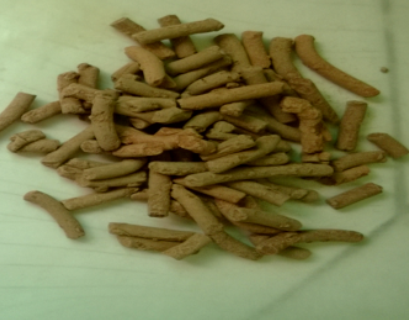
Removal of methyl orange by heterogeneous fenton process using iron dispersed on alumina pillared bentonite pellet
- International University, Viet Nam National University, HCMC
- 1Department of Environmental Engineering, International University, Vietnam National University
- Faculty of Environment, University of Science, Vietnam National University 227, Nguyen Van Cu Street, 4th Ward, District 5, Ho Chi Minh City, Viet Nam
- Department of Environmental Engineering, International University, Vietnam National University
Correspondence to:
Ngo Thi Thuan,
International University, Viet Nam National University, HCMC.
Email:
ntthuan@hcmiu.edu.vn.
Published:
2020-06-30
Abstract
Introduction: Heterogeneous Fenton is one of the Advanced Oxidation Processes (AOPs) and has been proven to be effective on azo dye degradation. However, a low-cost catalyst and factors affecting the processes of this system were further investigated. Methods: In this study, pellets of iron alumina pillared bentonite (PFeAPB) were prepared by dispersing iron ions on alumina pillared bentonite pellet. Catalyst activity and lifetime were investigated via efficiencies of Methyl Orange (MO) decolorization and Chemical Oxygen Demand (COD) removal, a typical dye type of textile wastewater. Characteristics of the PFeAPB catalyst were examined by X-ray diffraction (XRD), Brunauer–Emmett–Teller (BET) surface area, and X-ray fluorescence (XRF). Results: Results of batch experiments showed that specific surface area of the PFeAPB catalyst was 111.22 m2/g higher than its precursor by 2 times (57.79 m2/g). Goethite, Hematite and Maghemite phases with approximately 11.5% of iron elements containing in the catalyst were detected via XRD and XRF. Experimental conditions of pH, initial MO solution, Hydrogen Peroxide concentration, reaction time and catalyst loading were 2.0 ± 0.1, 12.7 mmol/L, 150 min and 20 g/L, respectively, to achieve 88.68 ± 5.69% of MO decolorization and 50.27 ± 6.05% of COD removal while dissolved iron in this heterogeneous Fenton process was below standard limit (2 ppm). Catalyst activity decreased by 5.22% in decolorization efficiency after the two first reusages. Conclusion: These primary results showed the potential of applying PFeAPB catalyst in heterogeneous Fenton process with low iron leaching into water.
Keywords:
Heterogeneous Fenton Catalyst
Alumina Pillared Bentonite
Pellet
Methyl Orange
Textile Wastewater

